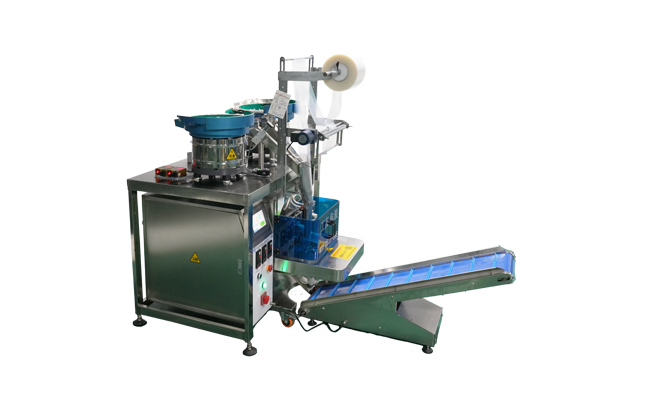
Date | 2023-05-07 06:35:06
In the hardware industry, packaging plays a vital role in protecting the products and ensuring their safe delivery to customers. To meet the high demands of this industry, hardware packing machines have been developed to automate the packaging process and increase productivity. In this article, we will discuss the technical aspects of a hardware packing machine and its benefits.
A hardware packing machine is a type of machine that is designed to automatically pack hardware products into boxes or bags. It is equipped with advanced technology, such as sensors and programmable logic controllers (PLCs), to ensure accurate and efficient packaging. The machine is capable of handling various types of hardware products, including nuts, bolts, screws, and washers.
The hardware packing machine consists of several components that work together to achieve the desired result. The first component is the feeding system, which is responsible for feeding the hardware products into the machine. The feeding system is equipped with a hopper, conveyor belt, and sensors to ensure a continuous and smooth flow of products.
The second component is the weighing system, which measures the weight of the hardware products and ensures that the correct amount is packed into each box or bag. The weighing system uses load cells and digital indicators to achieve high accuracy and precision.
The third component is the packaging system, which is responsible for packing the hardware products into boxes or bags. The packaging system consists of a box or bag former, sealing mechanism, and labeling system. The box or bag former creates the box or bag, while the sealing mechanism seals the package to prevent it from opening during transport. The labeling system applies labels to the package, which include information such as product name, quantity, and barcode.
The fourth component is the control system, which is responsible for controlling and monitoring the entire packaging process. The control system consists of a programmable logic controller (PLC), human-machine interface (HMI), and sensors. The PLC is the brain of the machine and controls the movements of the components. The HMI allows the operator to interact with the machine and monitor its performance. The sensors detect any faults or errors in the system and alert the operator to take corrective action.
The benefits of using a hardware packing machine are numerous. Firstly, it increases productivity by automating the packaging process, which reduces the need for manual labor. Secondly, it improves accuracy and precision by using advanced technology, such as sensors and PLCs, to ensure that the correct amount of hardware products are packed into each box or bag. Thirdly, it reduces packaging costs by minimizing the use of packaging materials and optimizing the use of space.
In conclusion, hardware packing machines are essential in the hardware industry, as they automate the packaging process and increase productivity. They consist of several components that work together to achieve accurate and efficient packaging. The benefits of using a hardware packing machine include increased productivity, improved accuracy and precision, and reduced packaging costs.Additionally, hardware packing machines also have environmental benefits. They optimize the use of packaging materials, reducing waste and minimizing the carbon footprint of the packaging process. This is especially important in today's world, where sustainability and environmental impact are becoming increasingly important considerations for businesses.
Moreover, hardware packing machines are highly customizable and can be tailored to suit specific hardware products and packaging requirements. This means that businesses can adapt the machine to their specific needs and requirements, increasing efficiency and reducing costs even further.
Another advantage of hardware packing machines is that they can be easily integrated into existing production lines, improving the overall efficiency of the manufacturing process. They can also be connected to computer networks, allowing for real-time monitoring and data analysis.
However, it is important to note that hardware packing machines require regular maintenance and upkeep to ensure optimal performance. This includes regular cleaning, lubrication, and inspection of the components. It is also essential to train operators on the correct operation and maintenance of the machine to prevent accidents and minimize downtime.
In conclusion, hardware packing machines are an essential component of the hardware industry, providing accurate, efficient, and cost-effective packaging solutions. They offer numerous benefits, including increased productivity, improved accuracy and precision, reduced packaging costs, and environmental sustainability. With their high customizability and easy integration into existing production lines, hardware packing machines are a valuable investment for any hardware business looking to optimize their packaging process and increase efficiency.
